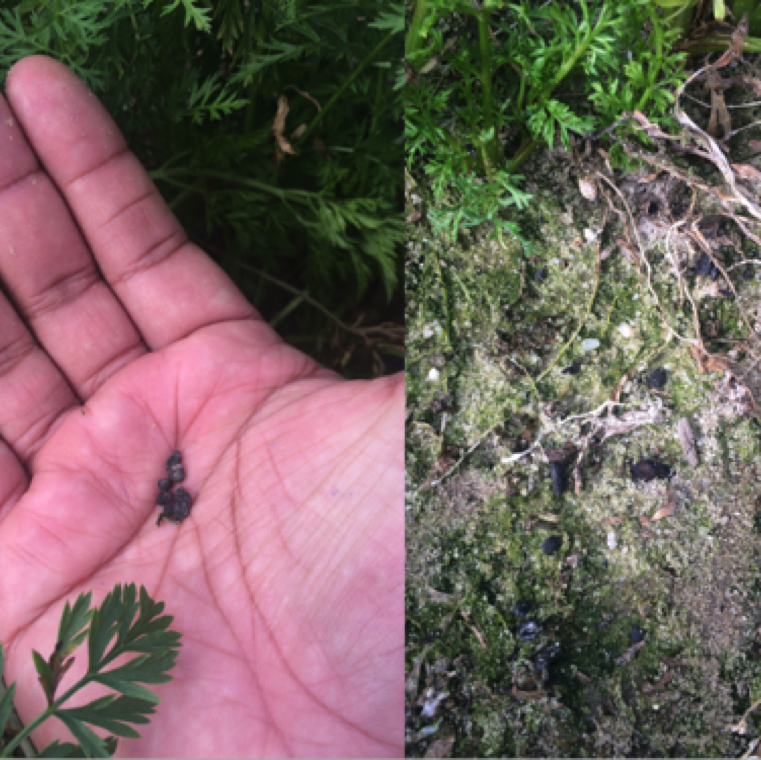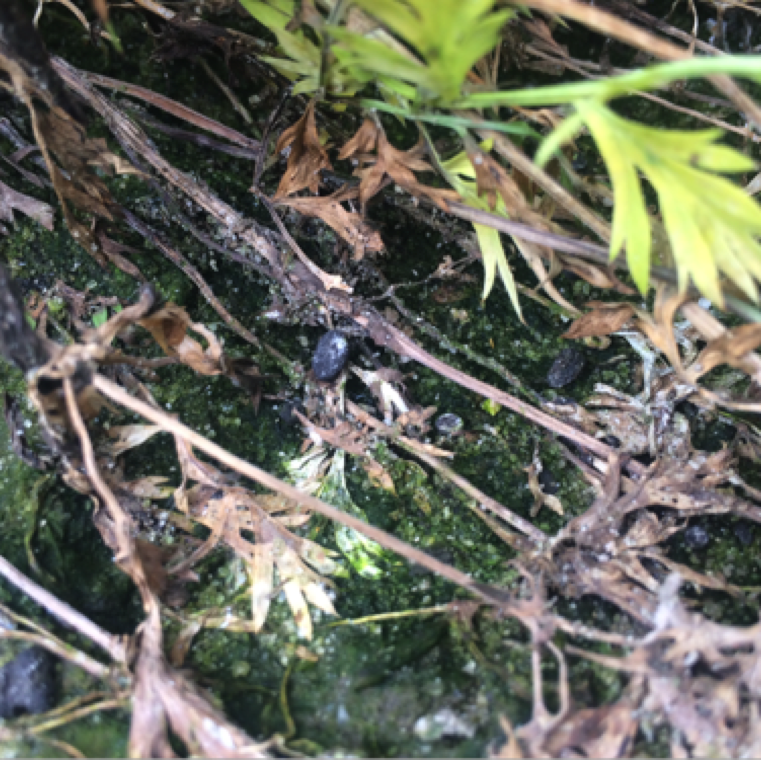

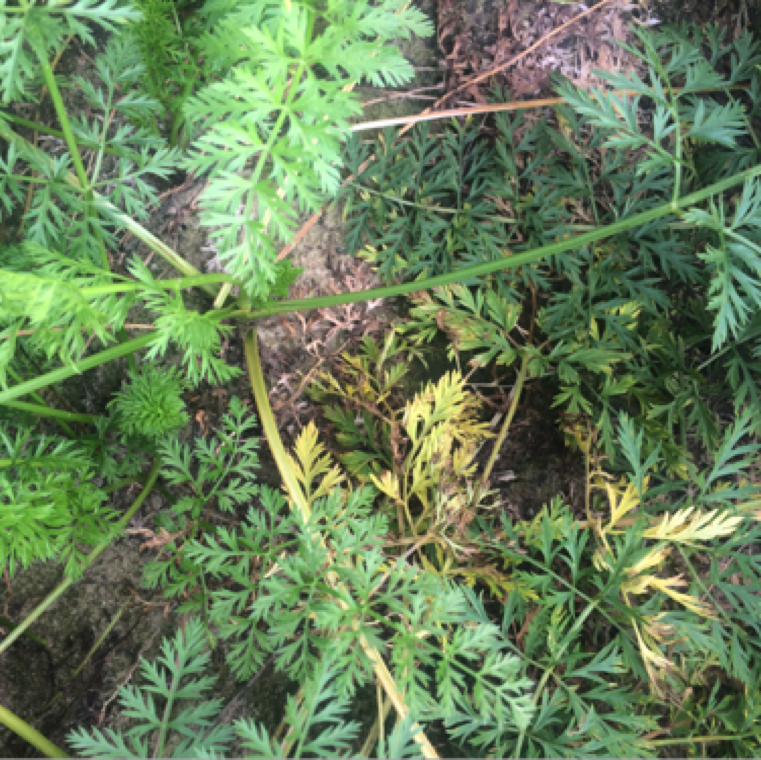
Cottony rot can cause major damage on carrot during early season production (November - March). The disease tends to be seen in patches in field than entire field.
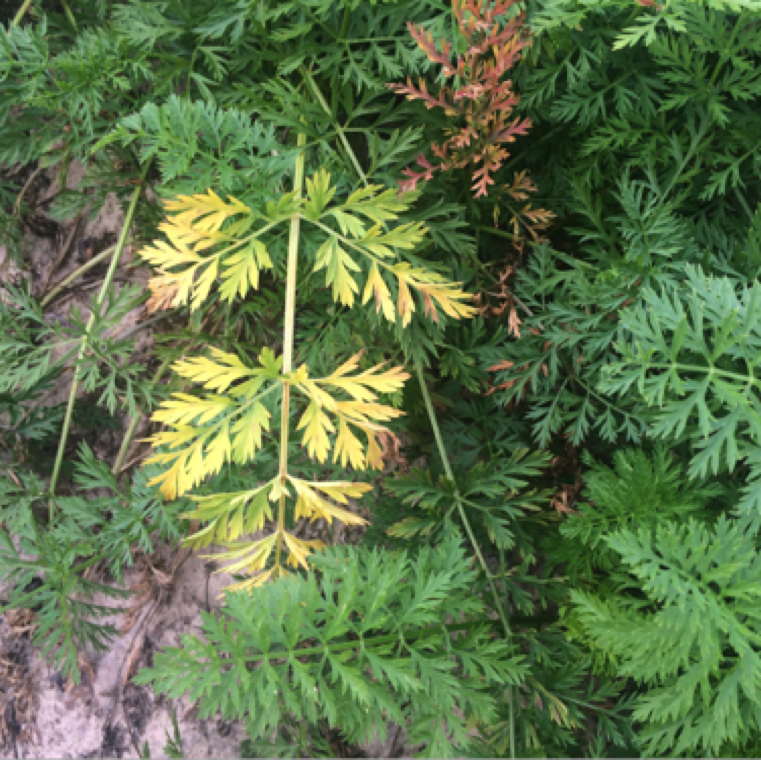
The first symptom of cotton rot is yellowing of leaves that could be confused with early stage southern blight symptom. The leaves may also change color to red.
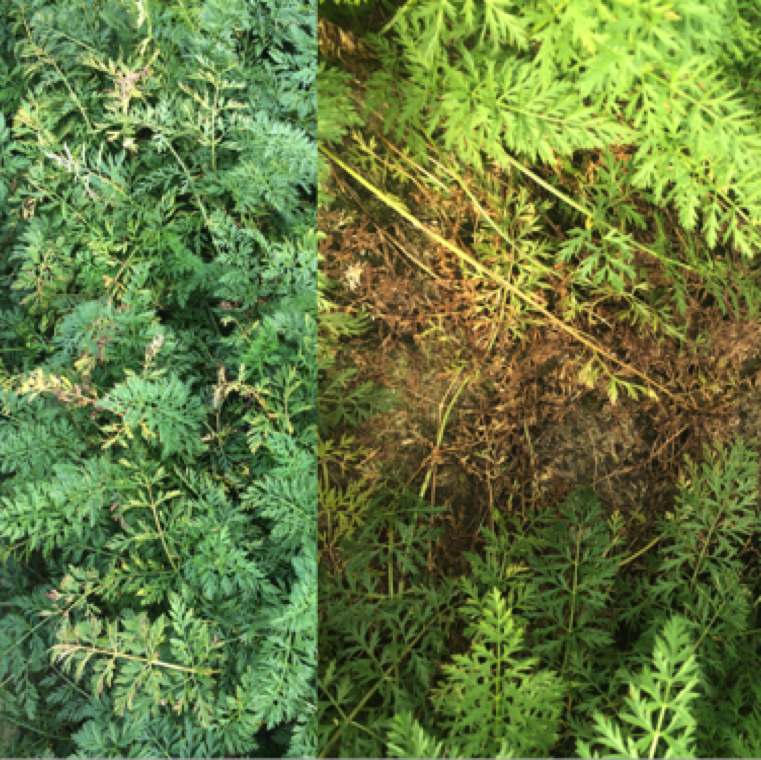
An early stage infection causing yellowing of foliage in multiple plants in the field (left). Severe defoliation especially of older leaves can be noticed in affected areas.
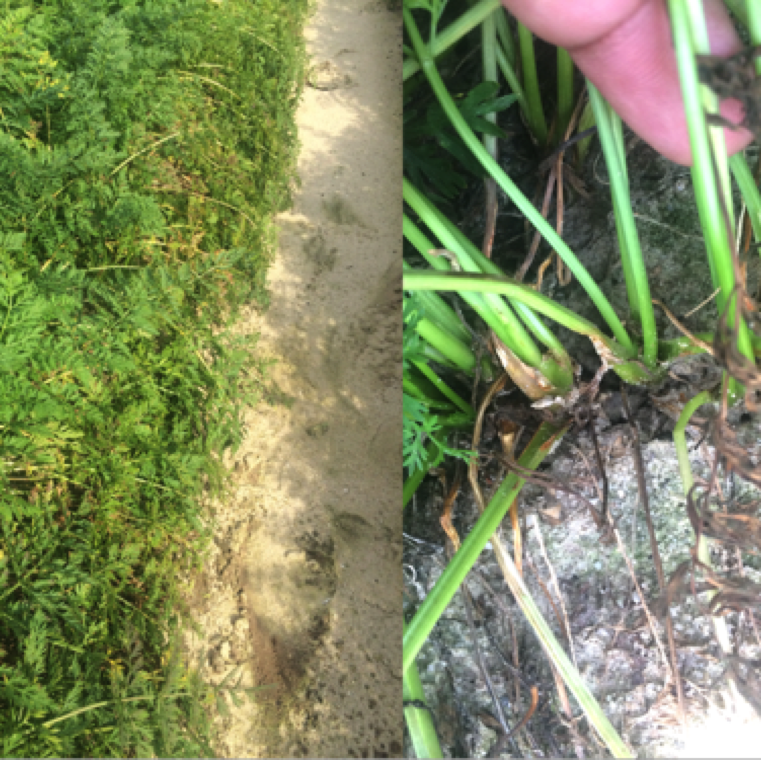
Thinning of the edge of the foliage will drastically reduce carrot canopy cover and affect photosynthetic area. White fluffy mycelia (fungal strands) can be seen on the petiole and leaves.
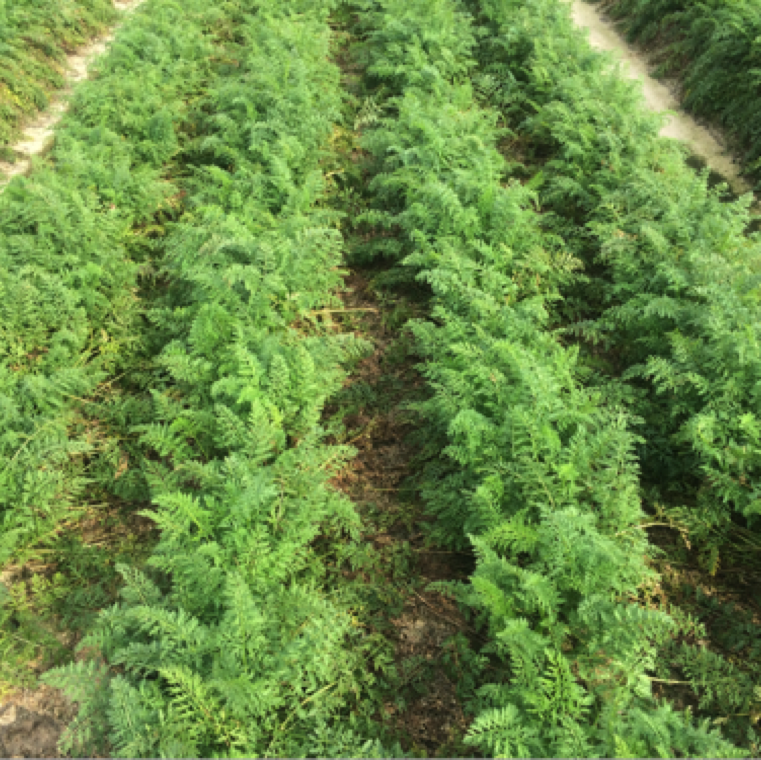
A field showing severe thinning of the row middles with diseased foliage on the soil. Some of the younger leaves are showing signs of yellowing.
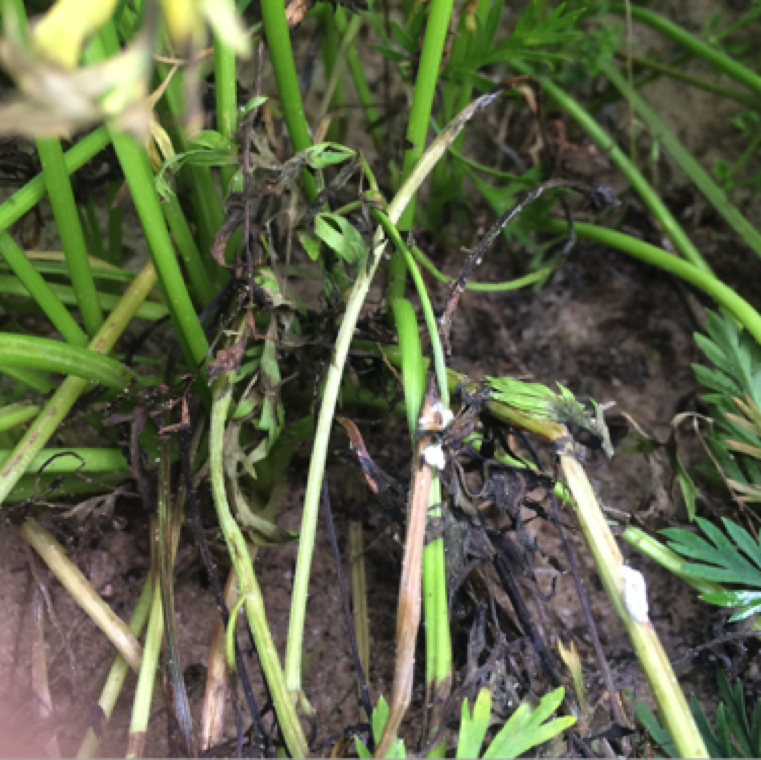
Water-soaking of the petiole and white fluffy mycelia on severely affected petiole and leaves. The plants rapidly decay and the mycelia clump together to form small sclerotia.
COTTONY ROT
Fungal causal agent: Sclerotinia sclerotiorum
Carrot diseases
